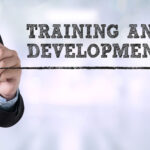Outside the workplace, your staff are customers for a variety of businesses. Each of these companies is seeking to capture customer attention, catering to them with cutting-edge technology. When your people see what contemporary technology can do, it changes their view of what tech should do — including the tech at your workplace.
This affects every business, even if you're not in the IT industry. If your company's tool sets aren't up to par, it can create friction in your business processes. This can complicate interactions between staff and your clients, slowing down customer service and eroding customer success efforts. The bottom line is that modern organizations need to be technologically similar to the consumer digital world.
How can you tell if your technology is assisting or obstructing your staff? The following 10 factors from a ZDNet.com write-up by Dion Hinchcliffe can help you gauge your standing:
- Devices and applications get rapid upgrades — The operating systems and applications in your workplace are upgraded regularly.
- Search tools that work — Your internal systems help your staff find the info they need; a strong link-ecosystem takes advantage of meta-data and feedback from user search behavior to bring an information structure similar to the Internet into the organization.
- Social, chat, and rich-media tools — You provide lightweight communication and collaboration tools to remove organizational barriers.
- Mobile apps that use what smart devices can do — Taking advantage of the unique power that smart mobile devices bring to bear (location, spatial orientation, optimization for touch, lightweight integration with popular productivity tools and social networks, voice interfaces, discoverability).
- Applications that are 'consumerized' for easy use — In other words, they don't need to be great or continue to get better, once they get in the door. Ease of use, and therefore usability, is often compromised significantly in order to meet feature checklists. The best apps are enjoyable, effective, and simple to use (and yes, have the best data/functionality as well).
- Purchasing options that are hassle-free – Up-to-date companies are able to work with online finance services, such as PayPal or Square.
- Communication policies that account for user preferences — Personnel, as well as customers, can choose to use communities, networks, channels, forums, and apps that work the best for their current needs.
- Internal data-sharing that has no artificial barriers — Agile companies provide lightweight file sync and sharing tools for their teams, such as Box or Citrix ShareFile.
- Digital services with a high level of availability — Contemporary cloud services are distributed and redundant so that the best tools are often available 99.99% of the time (less than an hour of downtime in a year).
- Work processes that leverage today's digital modes and business models — Consumers are accustomed to digital tools that enable them to work in new ways (for example, sensors that create data streams, systems to capture and process ambient data about manufactured objects, wearable technologies, dashboards, notifications, and visualizations). Your customers and your staff expect the same capabilities.
These tech elements don't involve anything that's bleeding-edge. Buzzwords about big data, wearable tech, or enterprise gamification are not what's at issue. Instead, these items mark a realistic minimum for contemporary businesses. Competent IT helps your company remain competitive, attract talent, and create value for your clients.
Many items in this list of recommendations are supported with aACE 5. This comprehensive, yet cost-effective accounting-ERP-CRM suite helps maximize your business velocity. Built with FileMaker, aACE can be easily customized to integrate unique business insights from industries such as professional services, wholesale distribution, and light manufacturing. Check out how aACE helps create a workplace where employees love getting things done.
"I would recommend aACE to anyone who wants to eliminate their time spent troubleshooting problems with other programs. We have twelve users and a day doesn’t go by that someone doesn’t comment on how much they appreciate this program." ~ Claire Wade, Director of Operations, Skip Gambert & Associates




